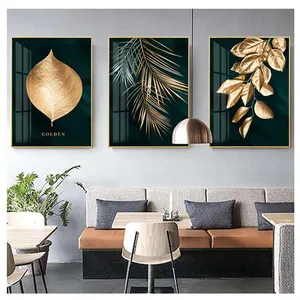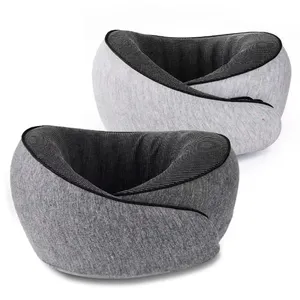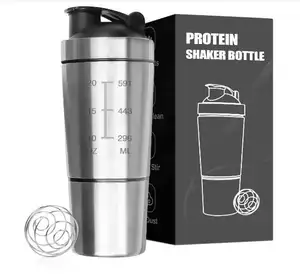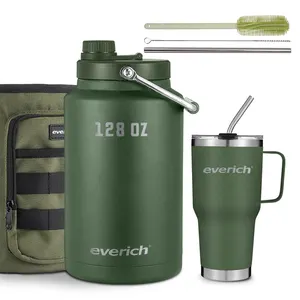Popular in your industry





















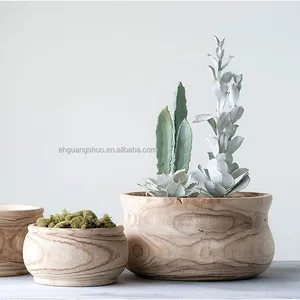






































Related Searches:

























































































































Top categories
About potting soil indoor plants
Introduction
Indoor gardening has become increasingly popular, transforming living spaces into vibrant, green sanctuaries. The secret to a thriving indoor garden lies in the potting soil. This guide explores the unique soil requirements of indoor plants, the significance of potting soil, and the various types available. It also offers practical advice on selecting the right soil, potting and repotting techniques, and maintaining soil health. This guide is a valuable resource for both seasoned indoor gardeners and beginners, helping you create the ideal environment for your indoor plants to thrive.
Understanding Indoor Plants and Their Soil Needs
Indoor plants have distinct needs compared to outdoor plants, and the right potting soil can help them thrive. The soil should retain moisture yet drain well, allowing plant roots to access air and water. Most commercial potting soils are soil-less, often made from wood products enhanced with ingredients that aerate the soil and deliver nutrients to the roots. These soils are lighter, fluffier, and usually labelled as 'potting mix'. A high-quality potting mix will have a loose, crumbly texture, preventing waterlogging and root rot.
Importance of Potting Soil for Indoor Plants
Indoor plants require a specific type of soil known as potting mix or artificial potting media. Unlike outdoor soil, potting mix is lightweight, free of weeds, and can sustain a variety of plants. Outdoor soil, when brought indoors, can introduce harmful pests and diseases to your plants. It's also heavy and can harden when dry, making it unsuitable for indoor plants. Potting mix, on the other hand, provides the right balance of air, moisture, and nutrition that indoor plants need, preventing diseases and promoting healthy growth.
Types of Potting Soil
There are several types of potting soil suitable for indoor plants. For succulents and cacti, a well-draining mix of wood products, sphagnum, peat moss, sand, and perlite is ideal. Orchids require a mix that holds moisture and quickly drains, often containing fir bark, sphagnum moss, charcoal, coco fibers, and perlite. Bonsai trees thrive in a mix of pumice, lava, calcined clay, and pine bark fines. Indoor citrus plants prefer a rich, loamy soil with sand for good drainage. Additionally, soil covers like glass beads, lava rocks, and polished stones can enhance your indoor plant decor while improving drainage and humidity.
Peat-Based Potting Soil
Peat moss, a popular base for potting soil, is derived from decomposed Sphagnum moss and is used for terrestrial plants both indoors and outdoors. It's spongy, holds water without being too wet, and is slightly acidic, balancing the pH for most plants. However, it's considered a non-renewable resource due to its long replacement time. Harvesting peat moss releases significant CO2 and can damage ecosystems. Alternatives include local soil mixes, compost, biochar, and coconut coir pith, though these may have their own caveats.
Coir-Based Potting Soil
Coir-based potting soil, also known as coco coir potting mix, is a sustainable and effective planting medium. Made from coconut husk components and blended with other substrates, it enhances soil quality and promotes plant growth. Coco coir potting mix is excellent for many types of indoor plants, and its composition can be customized based on the plant's specific needs. It provides excellent water retention and drainage, making it a viable eco-friendly alternative to traditional peat moss. Moreover, coco coir is available in various forms like grow bags, blocks, and bricks, catering to different gardening needs.
Compost-Based Potting Soil
Compost-based potting soil is a nutrient-rich option for your indoor plants. It's important to use the right amount of compost to ensure your plant receives enough nutrients without causing damage. You can apply a few inches of compost on top of the soil, or repot the plant in a mix of 30% finished compost and 70% your usual soil mixture. However, avoid using too much compost as it may lead to root burn due to excess phosphorus. Compost can be applied one or two times a year to maximize its benefits. Remember not to mix compost with other fine soils to allow for proper drainage and avoid soil compaction.
Choosing the Right Potting Soil for Your Indoor Plants
Choosing the right potting soil for your indoor plants is crucial for their growth and health. Most indoor plants need a moisture-retentive and well-draining soil structure, which gives the plant roots access to air and water. Commercial potting soils, often soil-less, are made from wood products enhanced with ingredients that aerate the soil and deliver fertilizer to the roots. These soils are lighter and fluffier, usually labelled as 'potting mix'. A good quality potting mix will have a loose, crumbly texture, preventing root rot and mold growth. Remember, each type of plant may require a specially formulated soil.
Factors to Consider
Choosing the right potting soil for your indoor plants involves several factors. First, understand your plant's soil preferences. Does it prefer dry or damp conditions? What nutrients does it need? How much drainage does it like? Avoid moldy potting mixes that can harbor harmful fungi. Opt for light and fluffy mixes that allow water to drain and roots to grow. Be cautious with fortified soil that includes fertilizer supplements and water-retaining granules. These can hold onto water more than other mixes, so adjust your watering schedule accordingly.
Specific Soil Preferences of Popular Indoor Plants
Indoor plants have specific soil preferences. Succulents and cacti thrive in well-draining potting soil, typically a mix of wood products, sphagnum, peat moss, sand, and perlite. Orchids, being epiphytes, require a potting mix that holds moisture and drains quickly, often containing fir bark, sphagnum moss, charcoal, coco fibers, and perlite. Bonsai trees and shrubs benefit from a special mix containing pumice, lava, calcined clay, and pine bark fines. Indoor citrus plants like kumquats and Meyer lemons prefer a rich, loamy soil with sand for good drainage.
How to Pot and Repot Indoor Plants
Potting and repotting indoor plants involve careful steps. Firstly, remove the plant from its current pot and loosen the roots. Remove about one-third of the old potting mix, which has likely depleted nutrients. Add fresh potting soil into the new planter, ensuring it's packed down to remove air pockets. If your planter lacks a drainage hole, layer the bottom with lava rocks before adding the soil. Place your plant on top of the fresh soil layer, add more soil around it until secure, but avoid packing too much. Finally, even out the soil on top and water well.
Potting Process
Potting your indoor plant involves several steps. First, remove the plant from its current pot and gently loosen the roots. Discard about one-third of the old potting mix to make room for fresh soil. Pour a layer of fresh potting soil into the planter, pack it down, and place your plant on top. Add more soil around the plant until it's secure, but ensure the roots have space to breathe. Finally, even out the soil on top and water your plant. Remember, a freshly potted plant doesn't need immediate fertilization.
Repotting Process
Repotting indoor plants involves several steps. First, gently remove the plant from its current pot. Loosen the roots and remove about one-third of the old potting mix. Add fresh potting soil into the new planter, ensuring it's packed down to remove air pockets. If your planter lacks a drainage hole, layer the bottom with lava rocks before adding the soil. Place your plant in the center of the new planter, add more soil until it's secure but not overly packed. Finally, even out the soil on top and water the plant. Note that a freshly repotted plant doesn't need immediate fertilization.
Maintaining Soil Health Over Time
Maintaining the health of your indoor plant's soil is crucial for their growth and survival. This involves regular watering and fertilizing. Watering your houseplants is a delicate balance - too much can lead to root rot, while too little can dry out the soil and harm the plant. Fertilizing your houseplants periodically is also important as it replenishes the nutrients in the soil that the plants need to grow. However, remember to follow the instructions on the fertilizer package to avoid over-fertilization, which can harm your plants.
Watering and Fertilizing
Watering indoor plants seems simple, but it's where many go wrong, either over-watering or causing dehydration. Generally, indoor plants' potting soil should be kept moist, not wet, needing watering once or twice a week in spring and summer, less in autumn and winter. The type of water used is also crucial as many plants are sensitive to chemicals and salts in tap water. It's best to use rain water. Feeding indoor plants during their growing period is vital for lush, healthy growth. They should be fed every second watering during the growing season, and every fourth watering in autumn and winter.
Checking and Adjusting Soil pH
Maintaining the right soil pH is crucial for indoor plants. Soil pH can be reduced effectively by adding elemental sulfur, aluminum sulfate, or sulfuric acid. However, it's best to adjust soil pH before planting. For instance, if your initial soil pH is 7.4 and you want to plant blueberries which require a pH of no higher than 5.5, you should apply about 8 to 12 lb. of aluminum sulfate or 1 1/3 to 2 lb. of elemental sulfur per plant. Remember, lowering soil pH is a slow process, so check the soil pH about three months after each application.
Conclusion
In conclusion, the right potting soil is a game-changer for indoor gardening. It's not just about filling a pot; it's about creating a nurturing environment where your plants can thrive. From understanding the unique needs of indoor plants to choosing the right soil type, every decision impacts your plant's health. The potting and repotting processes are crucial steps in ensuring your plants' longevity, and maintaining soil health over time is essential for continuous growth. By following this guide, you can create a thriving indoor garden, transforming your home into a green oasis. Remember, the secret to a flourishing indoor garden lies beneath the surface, in the potting soil.

